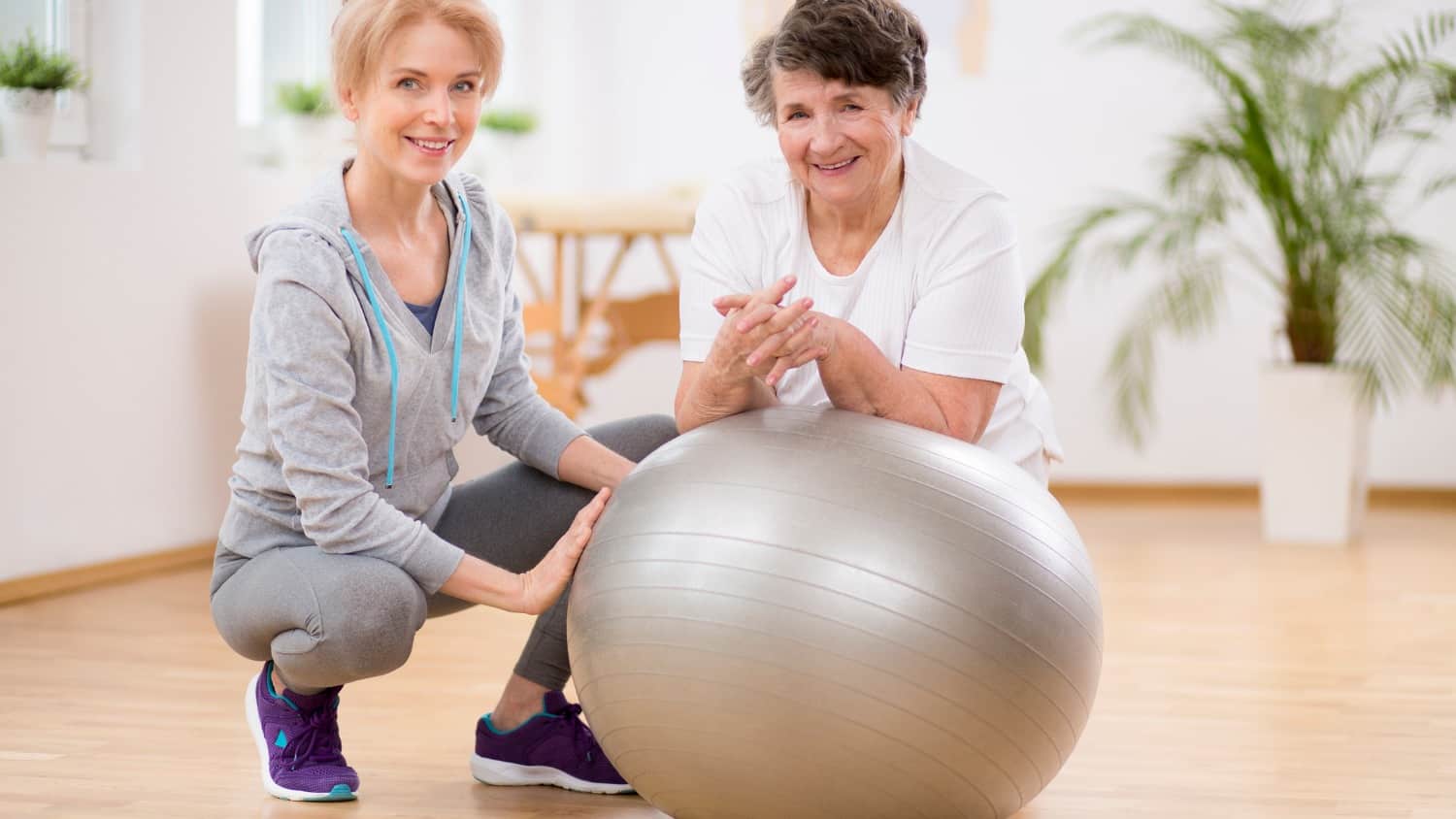
Take Good Care of Your Joints Now – They Will Thank You Later!
I am a firm believer in the adage that an “ounce of prevention is worth a pound of cure” when it comes to my health. That’s why I usually don’t wait for symptoms to tell me whether I need to do something to take better care of myself.
Even when it isn’t always possible, such as in the case with the changes our bodies go through as we enter our 60s and beyond, we can still take proactive steps to minimize the impact on our ability to live a healthy life.
This is especially true when it comes to the 360 joints in our bodies – yes, we really do have that many! We don’t need to wait for stiffness or pain – or the onset of arthritis – to minimize the effects of aging and to keep our joints as healthy as possible.
What Are Joints?
And while it is true that joint pain tends to increase as we get older, it doesn’t have to be inevitable. To know how to best protect our joints, it’s important to have a basic understanding of what they are and how they work.
Simply put, joints hold our bones together – mechanically speaking, of course. Most joints are vital intersections or links that allow us to bend, stand, sit, jump, and walk. Surrounding these brilliant evolutionary “links” is cartilage.
Cartilage acts as a cushiony lubricant allowing the joints to easily move without the bones rubbing directly on one another.
When you hear of people experiencing joint pain, it is sometimes a symptom of reduced or compromised cartilage in their joints. Overall joint health may rely heavily on the amount of healthy cartilage we have in between our joints.
Joint pain occurs inside or around a single joint connecting two bones, and it can have a multitude of causes. Some things that can impact our joint health, in addition to the normal wear-and-tear of aging, are:
Seemingly Minor Joint Injuries That Turn into Chronic Joint Pain
A good example of a minor injury turned chronic is the famous “tennis elbow” that people develop. But it also could be something as seemingly innocuous as a sprained ankle, a whiplash from a fender-bender, or a bruised shoulder from playing softball with the grandkids.
These are all injuries, and the thing that they all have in common is that they tend to heal initially, but the residual damage can add up over time with wear and tear on the cartilage, ligaments, and muscles.
Inflammation in the Body
Joints may not only be affected by injuries and excessive overuse, but also by inflammation caused by illnesses like rheumatoid arthritis, gout, and infectious and autoimmune diseases. This is frequently accompanied by accumulation of fluid leading to puffiness and limited range of motion.
Nutrient Deficiencies
Water is one of the six nutrients we need to remain healthy, and although bones and cartilage appear to be solid, they also contain water. If we do not drink enough water, our joint surfaces may get drier and porous, and this decreases tissue elasticity and cushioning.
Keeping Our Joints Healthy
I recently wrote an article pointing out the importance of stretching for keeping our joints limber, but there is a lot more that we can and should be doing to promote joint health. While joints may be impacted by various factors, two important ones that we can control are our diets and our lifestyle choices.
Even if we are genetically disposed to not having the best joint health, or if we already have some joint damage, making sure our joints get the nutrients they need and doing what we can to keep them strong can make a big difference.
Diet and Joint Health
First, let’s talk about diet. Our joints are very susceptible to whatever inflammation we may have in our bodies in general. So, it only makes sense that a diet packed with the nutrients necessary to reduce inflammation will do wonders for our joint health.
While this may sound complicated and laborious, it’s actually very easy. If you eat a well-balanced diet based more on fresh fruits and vegetables rather than on processed foods, you’re already doing a lot to help your joints. Try to limit the amount of fried foods and foods that contain trans fats.
Some foods that are well-known for their anti-inflammatory benefits are:
- Cherries, blueberries, blackberries
- Pomegranates, pineapple, tomatoes, papayas
- Red peppers
- Citrus fruits
- Turmeric (a wonderful spice), ginger, and cinnamon
- Oatmeal, quinoa, brown rice, and barley
- Walnuts and canola oil
- Broccoli, bok choy, kale, collard greens
Having healthy bones is also a key for having healthy joints and perhaps no vitamin is more essential for this than vitamin D.
The bottom line is that having a vitamin D deficiency, though often overlooked, increases our risk for joint pain. Great sources of vitamin D are salmon and green leafy vegetables.
You should also be aware of your calcium and magnesium levels, as these minerals are critical for healthy bones.
Certain conditions and medications can cause mineral loss and lead to weaker bones. A few, in particular, that require consultation with your doctor include steroid medications, diuretics, kidney diseases and even drinking cola soda drinks.
Lifestyle Choices
In addition to diet, there are other things we can do to help our joints do their job and stay healthy. Some of these include being aware of, and working on, our posture. Standing and sitting up straight, like we were told to do back in the day, helps keep our joints flexible and strong.
Other behaviors include maintaining an ideal weight to reduce pressure and workload on our joints (our knees, for example, bear the brunt of 1.5 times our body weight); making sure to lift with our legs and not with our back; and only stretching after we’ve done some warm-ups.
Also, be sure to see your doctor if you have any joint injury, such as spraining your ankle.
Last, but not least, make sure to include some form of exercise in your daily routine. And, it goes without saying that if you still smoke, plan to quit as soon as possible. In addition to all its other health risks, this habit also can negatively impact your joint health.
Finally, if you would like to try supplements such as SAM-e, which have a lot of research behind them, talk with a competent healthcare practitioner to see if it may be right for you.
Let’s Have a Conversation:
How do you manage joint pain? Are you doing anything special to protect your joints? What about diet? What about lifestyle and exercise? Tell us all about it. Please join the conversation.
Disclaimer: This article is not intended to provide medical advice. Please consult with your doctor to get specific medical advice for your situation.
Tags Healthy Aging







I’ve had joint paint in my knees since I was treated with Taxotere for breast cancer 18 years ago when I was in my mid 40s, it left me post menopausal. I had a hysterectomy 3 years ago which has had an affect on things like my hip joints due to the drop off in whatever hormones I had left and as I can’t have HRT I have to look to more natural means. I can’t take turmeric supplements as I’ve had my gall bladder removed. Exercise wise I walk as much as possible and am about to start a stretching/yoga regime. The joint pain is always worse when the weather is either rainy or damp. Last spring I was in Milan for 5 days and it was raining a lot of the time, I had to climb up a high step into an old fashioned tram and my left knee gave way underneath me. I was totally embarrassed as the tram driver came to help me and I don’t speak Italian.
Doctors have told me I still have some hormone activity going on in my adrenal glands, but it’s miniscule.
Play tennis 1.5 hours a week seems to be working for me.
I have been doing Eccentrics (stretching) almost daily. What a difference the classes have made. I do the class before a workout early in the morning.
I joined The Stretch Lab. Made a big difference.
Canola oil? Canola is getting bad press. Surely olive oil, avocado or coconut oil instead.
That jumped out at me also as bad advise. But overall a good article
Definitely not using canola oil.
Oh dear, what’s wrong with canola? I missed the news about it-more bad food news! I can’t seem to keep up.